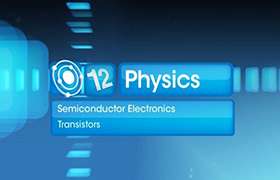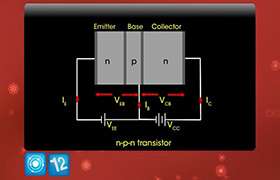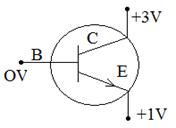CBSE Class 12-science Answered
Principle: A junction diode offers a low resistance to current in one direction(when forward biased) and a high resistance in the other direction(when reverse biased). Thus, the diode acts as a rectifier.
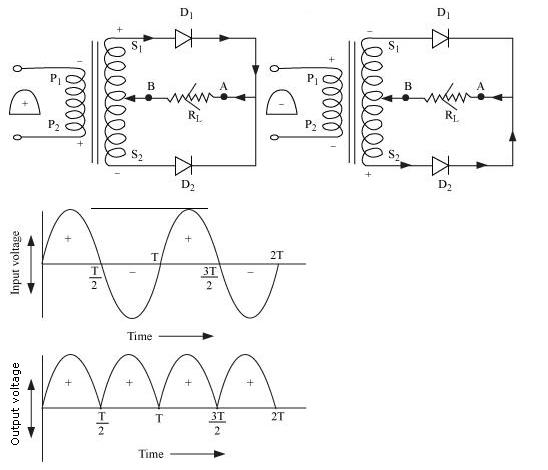
Full wave rectifier:
When the diode rectifies the whole of the AC wave, it is called full wave rectifier.
The figure shows the arrangement for using diode as full wave rectifier. The alternating input signal is fed to the primary P1P2 of a transformer. The output signal appears across the load resistance RL.
During the positive half of the input signal, suppose P1 and P2 are negative and positive respectively. This would mean that S1 and S2 are positive and negative respectively. Therefore, the diode D1 is forward biased and D2 is reverse biased. The flow of current in the load resistance RL is from A to B.
During the negative half of the input signal, S1 and S2 are negative and positive respectively. Therefore, the diode D1 is reverse biased and D2 is forward biased. The flow of current in the load resistance RL is from A to B.
Or
The symbols of p-n -p and n- p -n transistors are given below.
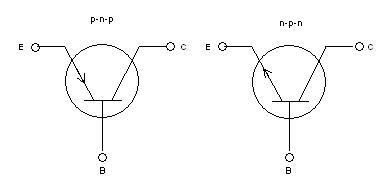
The base region is made thin and lightly doped so that it contains very few majority charge carriers.This reduces the recombination rate of electrons and holes across the emitter-base junction.This increases collector current and hence increases current gain of the transistor.
Action of p- n- p transistor: The emitter base junction is forward biased by battery ![]() and collector-base junction is reverse biased by battery
and collector-base junction is reverse biased by battery![]() .
.

The positive terminal of the battery ![]() repels the holes of the emitter towards the base. About 5% of the holes recombine with the electrons of the base. The remaining 95% of the holes enter the collector region.As the holes reach the end of the collector region, they attract the electrons from the negative terminal of the battery
repels the holes of the emitter towards the base. About 5% of the holes recombine with the electrons of the base. The remaining 95% of the holes enter the collector region.As the holes reach the end of the collector region, they attract the electrons from the negative terminal of the battery ![]() and combine with them. At the same time covalent bonds are broken in the emitter region, and an equal number of electrons get attracted towards the positive terminal of
and combine with them. At the same time covalent bonds are broken in the emitter region, and an equal number of electrons get attracted towards the positive terminal of ![]() and holes flow towards the base.Hence
and holes flow towards the base.Hence ![]()

